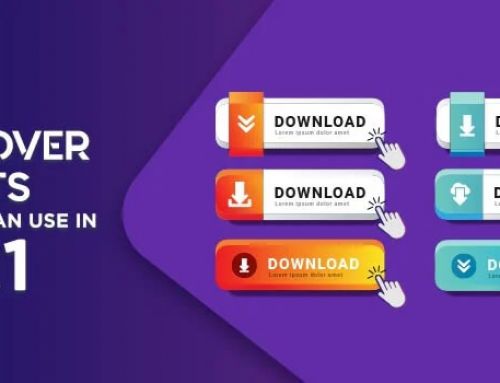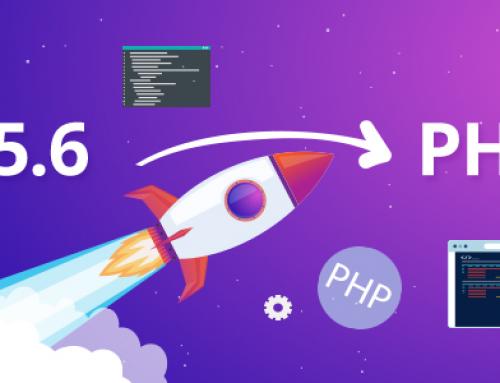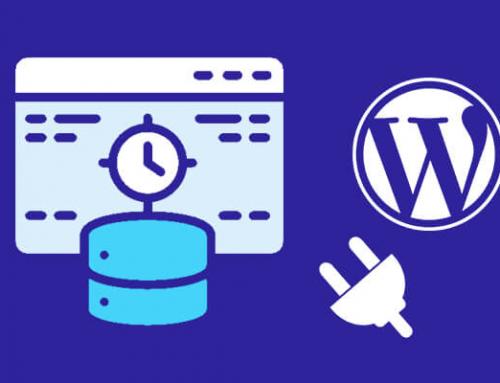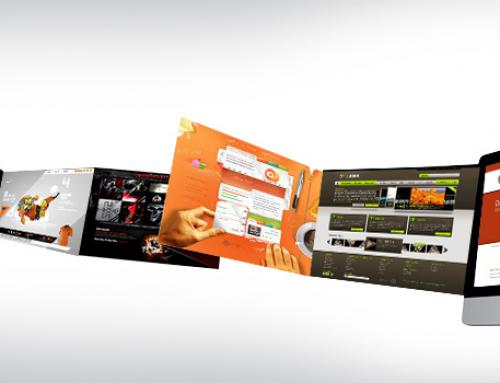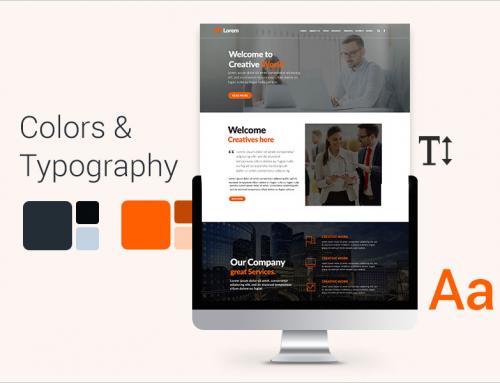In the latest website designing trends, responsive websites are dominating companies across all industries. The reason business firms are increasingly choosing this particular design for their websites is that they are compatible with all types of browsers and devices. This situation calls for the need to convert PSD to HTML, which enables people to get access to the website across all devices, with variable screen sizes.
When you convert PSD to HTML, your website enjoys more reach to people, who use different types of devices to access the internet. They may be using a desktop, laptop, smartphone, tablet or any other device. Irrespective of the screen size other technical aspects, your website can be accessed from any device when you convert PSD to HTML.
The website designing process normally starts with a layout creation, using Photoshop or other such programs. This layout is presented to the client, who approves it if it lives up to the expectation. Upon approval, the designer used HTML, CSS, jQuery or JavaScript to convert it into a dynamic webpage from its static layout. Although it is a time-consuming process, it benefits the company in the long run. A good understanding of the back-end and front-end website development is necessary to accomplish this conversion seamlessly. Websites should have easy navigation systems and the pages should load fast.
Are you trying to figure out how to convert a PSD file to HTML format? This comprehensive guide would discuss the processes involved in step by step and easy to follow manner. Conversion to HTML becomes necessary as most frontend web design projects don’t need to carry full-fledged design file of Photoshop. Only the idea needs to be conveyed with wireframe or rough sketch regarding the web layout and page’s content.
Can I rely on the software?
Whether I will get the desired output?
Let discuss in detail.
Relying on software for converting PSD layout to HTML conversion
Using a PSD to HTML5 converter software may sound appealing to you because the whole process would be automated. Different automation apps are present online which promises seamless conversion. However, these apps suffer from the problem that completely customized HTML/ CSS code cannot be generated by their automated modes. Also, the apps fail to consistently provide converted outputs which are pixel perfect. Hand coding interactions between photoshop file and outputted HTML lead to more photorealistic results.
You can tame the potential of conversion software for your purpose only if you have expertise in bug fixing and can script frontend codes.
However, I am not trying to state that automated PSD to HTML5 conversions fail to serve any purpose in frontend web development. Many sites take advantage from the advantages offered by these apps. With automation tools, you can create a basic eCommerce store on Shopify, a subscription box venture’s outline on Cratejoy or miniature business website on Basekit; for example. The essence is that if the site is to be positioned in a host which offers pre-formatted template, the conversion software’s use can prove advantageous. However, if you are building a site from scratch, the personal touch needs to be provided for driving better audience engagement.
Commonly Used Software for PSD to HTML conversion
To facilitate frontend development, you have to use the right software for optimum results. Many automation apps, tools, and software are available online for Photoshop PSD to HTML conversion. It is desirable to have an expert opinion on the right tools. This would help you arrive at the best tool easily without having to carry out experimentation with different utilities. If you get stuck with an ungainly tool, your time would only be wasted and the output would not measure up to your expectations.
Some of the tools that can be downloaded and purchased for getting started with conversion have been shortlisted below:
Selecting the Frontend Development Framework
Frontend web design framework in different development forms is gaining in popularity. You need not to start from scratch while developing frontend any of using these frameworks. Also, you enjoy the freedom of using different frameworks for different projects. You can also proceed without using any framework but you must be aware of the technicalities.
The market is full of different frameworks. For back end coding, different software frameworks are already in use such as PHP’s Laravel and Ruby on Rails. Recently, the trend of using frontend frameworks has picked up in the designing sector. In the case of frontend framework designing, 3 main components are dealt with i.e. CSS, JavaScript, and HTML.
If you are comfortable using a framework, you can go ahead. However, if you are not familiar with the chosen framework, you have to learn its working along with coding. This would prolong the execution time of the project. Using a framework brings down the quantum of coding required for a web page. However, project execution can become complex if you are not used to syntax and modalities of the framework.
Pros of Using Webdesign Frameworks
The quantum of coding involved with site design is reduced. Coding time is also reduced if you are familiar with the syntax and working. When properly leveraged, project efficiency increases and design becomes more visually appealing.
Cons of Using Webdesign Frameworks
Many frameworks are available in the market, each comes accompanied with its own unique syntax and way of working. You need to learn about the framework while designing. This may take its toll on the quality of coding. If the community support of the framework is not proper, you may not be able to make any headway with the framework. Ultimately, you have to invest in another framework. Support and upgrades are must for any good framework.
Some top Frameworks in Market
If you are desirous of using a framework, you must align your designing priorities with the best. Two of the top frameworks are discussed below for your convenience.
Designing Project’s Layout Type
Prior to converting PSD to HTML5, the web layout has to be finalized. Layouts can be categorized under 4 major types:
Converting PSD file to HTML
A PSD file carries the needful images such as background picture for the header and similar things which cannot be regenerated using CSS. Start your conversion from here. In the PSD file, slice the images which cannot be regenerated with CSS export tools of standard type. Next, get these assets exported to PNG or another suitable file format. The shadows have to be sliced and then have to be attentively placed next to the images. Since CSS3 supports shadow effects, you will only require the images as CSS3 can produce the shadowing effect.
Coding HTML for different sections
As a designer, you must understand that a single page can be sliced into different sections. You have to code the HTML script in the top to bottom manner to ensure uniformity of designs and proper layout. Code sectioning has been made highly efficient with HTML5.
After the creation of individual HTML sections, the same must be reviewed to ensure the accuracy of syntax. All your efforts would go in vain if the closing tag is not present in the main code body. If you skip something, it would take a significant amount of time and efforts to identify and troubleshoot the HTML syntax error. Also, errors can make the user experience poor. Devote sufficient time for reviewing code and eliminating flaws. You can deploy any HTML validator to fast track the code reviewing process.
Styling with CSS
Once the HTML shell has been created, styling has to be added with CSS. Initial set up for styling gets already done if you have been using Bootstrap or other such frameworks. Now, you have to add your unique designing touches to refine the code personally.
You can resort to preprocessors or CSS compilers. They offer a variety of options like frontend frameworks. Stylus, LESS, and CESS are top 3 preprocessors. CSS preprocessors are functionally similar to interpreted languages like PHP and classic languages used earlier like Active Server Pages (ASP).
Preprocessors offer various advantages, primary among them being able to use variables. CSS, conventionally, restricted the use of variables. You may suffer from a limitation while using the preprocessor. Your project becomes dependent on the preprocessor and no exit option remains available. The entire team has to necessarily use it so if any designer in your group doesn’t know how to use it, s/he has to learn its usage.
Ideally, the use of Bootstrap with SCSS is preferable. SCSS is a CSS generating preprocessor developed in Ruby. A completely responsive layout template can be set up really fast without application of manual efforts.
Adding Interactivity with JavaScript
Now that you have created CSS and HTML shells, you have to focus on the JavaScript section to boost interaction quotient of site. jQuery’s working knowledge would be needed for this. Compared to raw JavaScript, jQuery renders coding for dynamic frontend relatively simple. For the ease of creation of dynamic layouts, DOM is organized within jQuery library. Additional functionalities are also supported.
If you possess some knowledge of jQuery, it is better to refresh the same from the perspective of different frameworks. 2 frameworks that are popularly used are react.js and vue.js. For aligning HTML elements with functions and data of JavaScript easily, these frameworks prove very useful.
AngularJs is also a popular option. By using this framework, you can utilize MVC styling for setting data dynamically within HTML type layouts. As the use of JavaScript is picking up, increasing number of JavaScript MVC type styling frameworks are becoming available.
Irrespective of the framework chosen by you, you need to keep in mind that the same framework would be used for the entire lifecycle of the web application. If you want to rip out the existing framework from switching over to another, it would require extensive coding from scratch. The process can take a significantly longer time to get completed. Hence, it is important that you have chosen the correct framework to start with, one that can be learned easily. The framework must have an entire set of options present so that you can get the project completed within schedules. The user experience and site usability to get a major boost from the use of that framework. If you spend some time at the beginning of the project for chalking out all the framework related modalities, you would save yourself significant time and hassles once the project has been commissioned.
Advantages of converting PSD to HTML
- Compatibility with all browsers: When you convert PSD to HTML depending on an expert PSD to HTML conversion service provider, you can make your website available for a wider customer base. It is obvious that not all your customers will use the same browsers. Again, the configurations of their handsets are subjected to variation. The screen size and other specifications are variable. In order to maximize the reach of your website, you should make it compatible with all browsers and all devices. You may be losing out an extensive part of your customers if you fail to meet the technical necessities.
- Faster loading of websites: These days nobody online has the time or patience to wait endlessly for a website to load. Websites should have fast loading pages. It is one of the key factors determining the user experience. Your visitors should find it easy to access your websites, so the pages should take only a few seconds to load. You need to optimize this speed, so that the users are not frustrated while navigating your website. When you convert to HTML from PSD, the loading speed of the pages is increased drastically. Make sure that you have lightweight pages in your website, so that your visitors get an impressive experience while using your website. It will enhance the quality of your website and make people get to you and enjoy their stay.
- Smooth coding process: The web design process becomes easier when you convert PSD to HTML. The designing process consists of various stages, like slicing, coding and the website markup mechanism. Conversion from PSD to HTML makes these processes easier and ensures that your website adheres to the W3C (World Wide Web Consortium) standards. You should remember that the validation of your website depends on cascading and linking the style sheets, besides HTML coding. When you use semantic coding, you can easily locate the errors. You can also enjoy an easier debugging process. It makes it easier to place the right element in the right position in the website.
- Increased visibility of the website: Irrespective of the nature of your business, you would want to increase the visibility of your website. When you promote your brand, you should reach out to the maximum number of people. The first step to achieve this goal is to convert PSD to HTML with the help of any of the best PSD to HTML conversion experts. The crawlability of the search robots increases when you incorporate HTML coding. HTML coding empowers your website with certain features that make it friendlier to search engines. PSD layouts do not offer you with such features.
- Develops brand identity: Creating a unique brand identity bolsters your business as you stand separated from the crowd and win an identity with which your prospects can easily connect. You can achieve this through HTML coding. Using the conversion services from PSD to HTML will enable your website to gain both offline and online brand equity. It makes your website look professional and you can boost up your brand image, which is an important asset for any company. HTML coding makes your site look sophisticated, much better than those of your competitors.
- Designing responsive websites: Responsive websites enable a company to expand its reach among the customers. They are accessible from all types of devices. An acquaintance of various PSD to HTML conversion techniques is necessary for designing responsive websites. You can gain higher ranks in the search engines too, as these websites enjoy far more traffic inflow. This is possible only when you make your website is technically compatible with all sorts of devices.
- Better user experience: The conversion from PSD to HTML enhances the quality of a website. A good website provides a better experience to the users. You should ensure a good user experience to your visitors, as it adds to your brand image. A negative impression about your website may repel your customers from visiting your website in future. HTML coding improves the quality of the website, and correspondingly, user experience.
- Implementation of dynamic functionality: Websites are constantly advancing with technological innovations. Online shopping, instant commenting, animation and parallax design are among the most common features that are being incorporated in these websites. When you use PSD, you get a static layout where you cannot integrate these features. When you rely on PSD to HTML Conversion Service, you can make the best use of these features, upgrading the quality of your website. Many businesses nowadays outsource PSD to HTML conversion services to experts.
- Creating websites without tables: Search engines favor websites without tables. This notable design can be achieved through HTML coding. Converting PSD to HTML through CSS pushes up your rank in the search engine results. The webpage files are of smaller sizes when you get a table-less design. You can also eliminate junk markup codes of HTML, reduce the ratio of code content and other elements that mess up with your website in a table-based design when you switch to HTML coding.
- Easy integration with CMS platforms: You can use any CMS of your choice for converting PSD to HTML. The conversion can include PSD to WordPress, Drupal, and Joomla, besides others. It simplifies the content management system.
Final Tips for PSD to HTML conversion
By now, this step by step PSD to HTML conversion guide must have strengthened your foundation needing for starting the project. But, before starting with the conversion, you need to keep in mind some tips shared below.
Slice your images perfectly so as to represent the brand’s and site’s quality immaculately. Comprehensively test entire array of coding aspects related to CSS, HTML, and JavaScript. You can always seek the help of a validator.
Keep the code clean to facilitate others on the project to seamlessly pick up from the point where you had stopped working. For enterprise-oriented projects, freelancers or in-house designers may work along with you. Hence, keeping the code neat and organized is very important.
Your code must be SEO compatible. While coding, you may have end users in your mind but it is also essential to code in a manner that the design is friendly for search engine bots. Using the Fetch tool of Google, you can carry out reviewing and visualizing of the looks of your site from the perspective of bots.
As a designer, you must prioritize the optimum user experience. This is important for creating intuitive site navigation equipped with controls that facilitate convenient browsing.
You have to make provisions for connections that are slower which makes page loading time more. Also, the site should be usable to users suffering from disabilities. The web layouts and images must factor in the special needs of mobile devices that suffer from slow connectivity.
To ensure that the pages’ load faster, you need to check out the load time. This would ensure better user experience on mobile devices and lead conversion rate would be high. Performance testing assures that page loading wait time for users would be minimal. You can use readily available tools for testing the performance of the site.
Now, it is time to conclude this exhaustive and stepwise post on PSD to HTML conversion. If you adhere to the tips shared over here, you can save yourself considerable time and energy when working on your next project. If you need any further help, you can get in touch with the experts of any leading web designing company for securing further insights.
Evidently, it is wise to convert PSD to HTML as it empowers your website with the latest features. For you to survive the competitive ecosystem and beat your competitors, it is imperative that you have a well-equipped website done by experts offering extraordinary web design services. To be assured of apex quality, timeliness and professionalism, make sure that you rely only on the most reputed PSD to HTML conversion company for your purpose.





